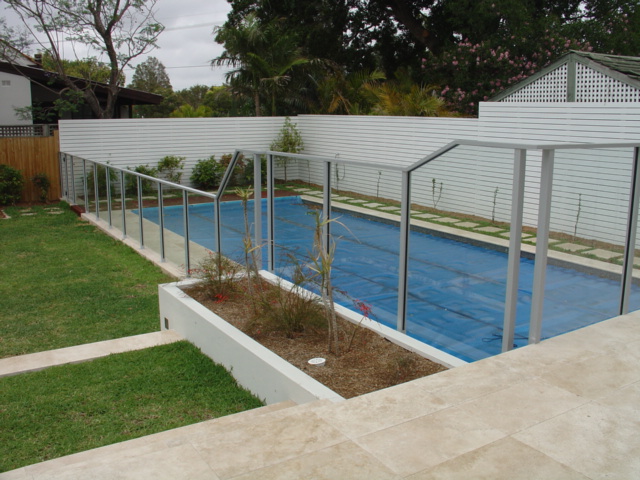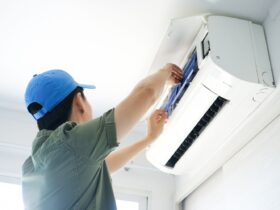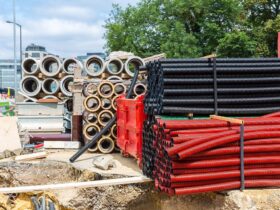There is an area under many homes that is often ignored, and rarely ever considered. In fact, one of the only times that it is typically considered is when there is a problem.
I’m talking about the crawl space, which is similar to a miniature basement and can be found in many homes in different parts of the world. A crawl space serves many useful purposes, but it is also subject to various problems.
Perhaps the most common reason why we have a crawl space under the house is to provide a separation between the home and the ground. Although it would certainly be possible to build a home directly on the ground, there would be many more problems that occur as a result.
In addition, the crawl space is a convenient place where we can run plumbing, electrical conduits, and many other items that would otherwise have to be run through the walls or perhaps even through the floor.
In this article, we are going to consider more than the purpose of the crawl space–we are going to consider the need to keep it in pristine condition. Unfortunately, many homeowners find that their crawl spaces fall into disrepair, which can cause problems that are much better avoided. But in reality, most foundation problems can be fixed using various innovative and advanced foundation repair solutions. If you suspect your foundation has a problem, it’s important to consult a professional foundation repair contractor right away.

Is It Necessary to Have a Crawl Space?
As we will discuss, the crawl space provides many different benefits that are worthy of consideration. This may lead you to believe that it is necessary to have a crawl space, but that is not true.
Foundations can take on many different forms, including slab, pier and beam, stone, wood, and even stilt homes. Each of them serves a purpose, but some are more convenient than others.
At times, the type of foundation is determined by the conditions in the area. For example, if the water table is very high, then a crawl space or basement is not going to be feasible.
On the other hand, digging down into hard soil or through rock can be difficult, so a crawl space may be considered to reduce the amount of digging that is needed.
Even the topography can make a difference in the type of foundation that is used. If the lot is sloping, then a basement with one side exposed and used as an exit may be considered.
The crawl space is not necessary, but it is beneficial when you compare it to a slab foundation. There are even benefits to having a crawl space, compared to a basement.
Of course, if you already have a crawl space and are living in the home, you are limited as to the options you have available. You may be able to dig a full basement, but this is a significant undertaking and would require the help of a professional to make sure you don’t undermine the existing foundation.
Let’s take a look at some of the pros and cons of having a crawl space to determine whether it is the right choice for your home.
Pros and Cons of Having a Crawl Space
According to some estimates, crawl spaces are found in approximately 15% of homes. This number may be higher or lower, depending upon the area of the United States and the existing conditions.
Undoubtedly, crawl spaces provide some benefits that are worthy of consideration. At the same time, however, it is also good to understand the possible problems that can arise.
Even if you have an existing crawl space, understanding the pros and cons can help you see how you can utilize that space to the fullest. It can also help you avoid any problems that may be associated with that type of foundation.
Advantages of Crawl Spaces
Savings During Construction: When you compare the cost of building a crawl space foundation to building a full basement, you will quickly discover you are saving quite a bit of money. Depending on the soil conditions, the cost of a crawl space could be half (or less) than that of building a basement.
Access to Wiring: If you have a slab foundation, then you would have to run the wiring and piping through the slab or find another way to run it across the home. This makes it very difficult to access the wiring and piping–but not if you have a crawl space. If necessary, you can even change the configuration of the wiring and plumbing easily in a crawl space.
Warmer Floors: Since you are putting a barrier between the ground and the floor of the home, the floor will tend to be warmer. This benefit can even be improved if the crawl space is insulated.
Storage: Not every crawl space is suitable for storage–but if it is encapsulated and dry, you can use it to store items neatly out of the way.
Disadvantages of Crawl Spaces
Elevated First Floor: If you have a crawl space foundation, then you likely have to climb a few stairs to get to the first-floor level. This may be an inconvenience, especially for those with limited mobility.
Moisture: The crawl space tends to be a location in which moisture accumulates. This can lead to several other problems, including mold, poor air quality, and rotting wood.
Access: Compared to a basement, crawl spaces tend to be difficult to access. Typically, you enter the crawl space through a covered hole in the floor, and then once you are in the crawl space, you will have to crawl to get to your intended location.
Identifying Problems with the Crawl Space
It is important to identify issues in the crawl space as soon as possible, as they can affect the health of your family as well as the stability of your home.
The following are some of the most common signs of crawl space problems. Not every one of these signs is proof positive that the foundation is failing, but multiple or progressive signs should not be ignored.

Mold: If you see visible mold in the crawl space, this indicates an obvious problem that must be addressed. Because of the stack effect (in which air escapes through the roof and is pulled from the crawl space), any mold in the crawl space will end up in the living area of the home.
Old House Smell: If you have been told that you have an “old house smell,” then it is likely a problem with mold and bacteria. As these decay, they release the smell that is commonly recognized as being an old house smell. If you live in the house, you may not recognize this problem–but you can ask a trusted friend to be honest with you.
Infestations: The crawl space is a common area where pests infiltrate, including various types of insects and rodents such as rats and mice. These can reduce the quality of the air in the crawl space and the home. They can also enter into other parts of the home, leading to obvious problems.
Sagging Floors: The floors may be sagging as the wood underneath deteriorates. The wood support may rot as a result of higher moisture in the crawl space, leading to this problem.
High Energy Bills: Due to the higher moisture levels in the crawl space, the humidity will be higher in the living space as well. This makes it difficult to heat the home in the winter and cool it in the summer, resulting in higher energy bills.
Can a Crawl Space Be Repaired?
Although you may be recognizing some significant problems with your crawl space, there is a silver lining to that dark cloud. In most cases, crawl spaces can be repaired (and even improved upon) regardless of the damage.
The first step in any foundation repair job is to inspect the foundation. It may be necessary to take preventative measures, such as installing a French drain or field tile drain system to reduce hydrostatic pressure and drain the water from the surrounding soil.
If any damage has occurred to the pads or posts, they can also be repaired in place. Some posts may need to be replaced, but it is possible to do so without disrupting the integrity of the crawl space in the process.
If the stem wall is damaged, it can also be repaired. As long as the damage isn’t significant enough that it would require replacement, piers can be used to strengthen the wall, along with carbon fiber straps and epoxy injections in any cracks.
Insulation may need to be removed from the crawl space if it is wet. New insulation can be installed to keep the home at a more comfortable, even temperature.
Depending on the conditions and the area the crawl space repair is taking place in, seismic retrofitting or crawl space jacks may also be used.
A crawl space encapsulation can be performed after any repairs have taken place. This involves wrapping the walls and floor with a layer of polyurethane sheeting. It prevents moisture from entering the crawl space, and stops pests from entering as well.
After the floor and walls have been wrapped properly, a dehumidifier can be installed to keep the area dry. Doing so allows you to use the crawl space for storage, as it will be clean and dry from that point forward.
The crawl space may be a common area of the home where problems occur–but with the proper care and attention, it can be a remarkably usable part of the home.
Author:- Timothy Roberts
I spent 20+ years working in construction and maintenance before retiring to the keyboard to do writing full-time. I enjoy spending time with my grandkids and traveling when I’m not writing construction articles.






